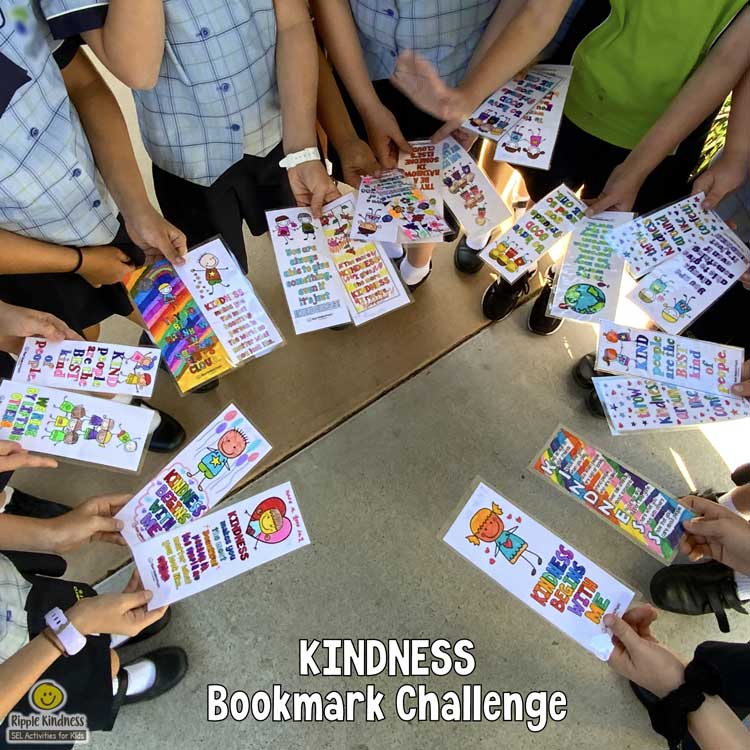

Random Acts of Kindness Day and World Kindness Day activities can help save your sanity and unite your classroom. The world feels uncertain and turbulent right now. It seems people are on edge and feeling lost. It's times like these where we look for the good to provide hope and that's where kindness can make such a difference. Kindness is a value that goes beyond just being a moral necessity. Teaching it builds positive character traits like empathy and respect and increases emotional intelligence. This can have a powerful impact on wellbeing and create a calm and harmonious classroom community. If that's not enough to convince you to participate in World Kindness Day and continue promoting altruism thereafter, read on.
Table of ContentsPromoting kindness doesn’t just create feel-good emotions. It's a practice rooted in scientific research and proven to enhance the wellbeing of students and teachers. Dr. Waguih William IsHak, a professor of psychiatry at Cedars-Sinai reports the positive effects of kindness on mental and emotional health. “Acts of kindness can release hormones that contribute to your mood and overall wellbeing.”
"The rewards of acts of kindness are many," says Dr. IsHak. "They help us feel better and they help those who receive them. We're building better selves and better communities at the same time."
He says studies show that participating in random acts of kindness releases oxytocin and dopamine. These are chemical messengers in the brain that can give us a feeling of euphoria and are credited with causing what's known as a "helper's high." As students engage in kindness activities, they are rewarded by these powerful hormones. They can also experience an increase in serotonin, a neurotransmitter that helps regulate mood to reduce stress and anxiety and create a sense of happiness and fulfillment. This leads to another important benefit; teaching kindness can also boost academic performance and results.
"It is possible that teachers, parents and mentors may be able to help children achieve academic success by modeling, teaching, and fostering the development of helping behaviors."
And if that isn't enough, kindness helps people to connect. Relationships are another powerful and essential component for wellbeing. This makes kindness an important classroom management strategy to encourage good behavior and a positive classroom community.
As you've seen, social-emotional learning (SEL) and kindness lessons play a pivotal role in fostering wellbeing and instilling values of empathy, respect, and consideration. Using kindness lessons to nurture positive character traits can be fun and educational at the same time. Students will not only excel academically but also develop into compassionate and empathetic individuals and it can have a profound impact on your classroom climate. Teaching kindness can be as simple as noticing and pointing out kind behavior, reading picture books where being kind is the central theme, and asking students to share when positive things happen. But the most effective way to instill altruism is to participate in acts of kindness. Doing and feeling creates the helpers' high that becomes addictive and leads to more good deeds. This is where the celebrated days are fantastic for starting a habit of kindness and respect. Make an effort to find engaging Kindness Day activities to get your students hooked on doing good!
Throw a love bomb into your classroom with this popular kindness challenge. Kids can't get enough of it and teachers love that this no-prep bookmarks activity is FUN while promoting friendship and a positive classroom community. Students can either make their own or use a ready-made coloring bookmark and personalize it with pencils, markers, and glitter. They then turn it over and write a positive message on the back to a schoolmate. They might write a compliment, a note of encouragement, or wish them a great day. When everyone's finished, the fun begins! You'll take your grade on a secret mission to hide their bookmarks in the library as a surprise for unsuspecting lenders. As your students quietly sneak around the library being careful not to be caught in the act of kindness, they feel proud that they're making a difference to someone's day.

This highly engaging activity teaches students valuable skills like consideration and empathy as they think of others while crafting their message. But there are also developmental benefits like enhancing fine motor skills, spatial awareness, strengthening muscles in the hand and improving the control needed for writing.

My ready-made bookmarks are so popular with elementary and special needs students. They tick all the boxes for fun, excitement, and learning while making an impact throughout your school.